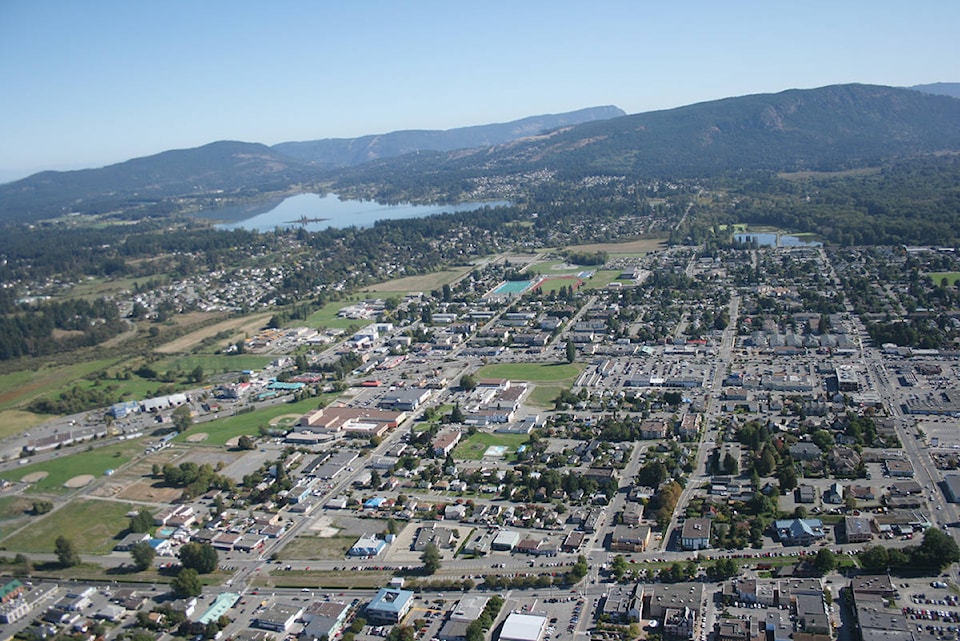“…It was difficult to suppose ourselves in one of the wildest of the wild districts of Vancouver Island”. —Robert Brown explorer, writing of the Cowichan Valley in 1864.
As we celebrate Canada’s 150th birthday (as measured from the year of Confederation), it’s important to remember that Cowichan Valley history didn’t begin with the arrival of white settlers in 1862.
First were the Cowichans. The traditional lands of the Hul’qumi’num peoples included not just southern Vancouver Island, but the Gulf and San Juan Islands, the lower Fraser River and much of Puget Sound.
More than 120 archaeological sites in the Duncan area, at Cowichan, Genoa and Maple Bays, and at Bird’s Eye Cove, suggest habitation as much as 2,000 and more years ago.
This time frame has been more than doubled to 4,000 years by further discoveries besides Somenos Creek.
“Older yet, the final resting place of ancestral remains recently uncovered in the vicinity of Green Point have been tentatively dated at as much as 4,500 years,” Daniel P. Marshall wrote in his history of the Cowichan peoples, Those Who Fell From the Sky. “…The Green Point site is older than anything else previously discovered and it necessarily leads one to wonder what other evidence, possibly older, continues to remain hidden from view.”
Cowichan oral tradition includes references to a great flood, perhaps that of Biblical history. A large rock on Mount Prevost (Swuqus) is believed to have been the anchor for the Cowichans’ equivalent of Noah’s Ark. The survivors of this flood, Syalutsa and Teyqumut, the first two people, and their subsequent children, were the beginnings of the Cowichan First Nation.
By the time of the arrival of the first Europeans, the Cowichans were settled in 17 villages along the full length of the Cowichan River, having prospered from their relationship with the sea. Here, and on the Lower Mainland, they harvested the salmon: sockeye in July, humpback in August. (It’s intriguing to note that, before latecomers christened the Fraser River for the intrepid explorer, its native name was ‘Cowitchen.’)
The establishment of Fort Langley by the Hudson’s Bay Co. did little to change the status quo. Not until 1843, and the founding of Fort Victoria because of American expansionism in Oregon Territory, did the newcomers’ presence begin to make itself felt. At first it was business as usual for the Cowichan tribes. But soon came territorial expropriation and the Douglas treaties which remain unfulfilled more than a century and a-half later.
The 78 colonists who disembarked from HMS Hecate at Cowichan Bay in 1862 weren’t, strictly speaking, the first of their kind. Three years before, an attempt had been made to colonize the Chemainus Valley. Pre-emption rights were granted to 212 persons — to land later realized to be incapable of supporting one-tenth as many.
Even these colonists had been preceded by a handful of Europeans, some of them former HBCo. employees. John Humphreys was one. He later claimed to have settled here in 1846 although some of his contemporaries argued that he’d arrived 10 years later.
When the Vancouver Island Exploration Expedition, Robert Brown commanding, came through in 1864, they enjoyed the hospitality of M. Jean Campagnon. He’d settled near the mouth of the Cowichan River just two years before but already had more than 100 acres under cultivation in soil so rich that he bragged he could grow anything.
He was cultivating beet root, tobacco and wild Oregon grape. Brown, a botanist, could scarcely believe that, in so short a time, Campagnon could have transformed what he called a wild desert into “such a state of cultivation that it was difficult to suppose ourselves in one of the wildest of the wild districts of Vancouver Island”. [Sic!]
The rich land was there: 45,000 arable acres opened to settlement of which 2,705 acres were assigned to be tribal reserves. This potential was soon fulfilled, the Valley becoming a major agricultural producer. By the turn of the last century local poultry and produce were internationally famous.
It was the tide of settlement, an unforeseen but politically expedient spin-off of the Fraser River and Cariboo gold rushes, that forever changed The Warm Land and ultimately resulted in the creation of Cowichan reserves as they are today.
At a time of celebration of Canada’s first century and a-half as a nation from sea unto sea unto sea, it’s important to remember that, unlike the Victoria, Saanich, Sooke and Metchosin tribes, the Cowichan peoples never signed a treaty relinquishing their rights to the land and its resources, nor have they been paid for them.
